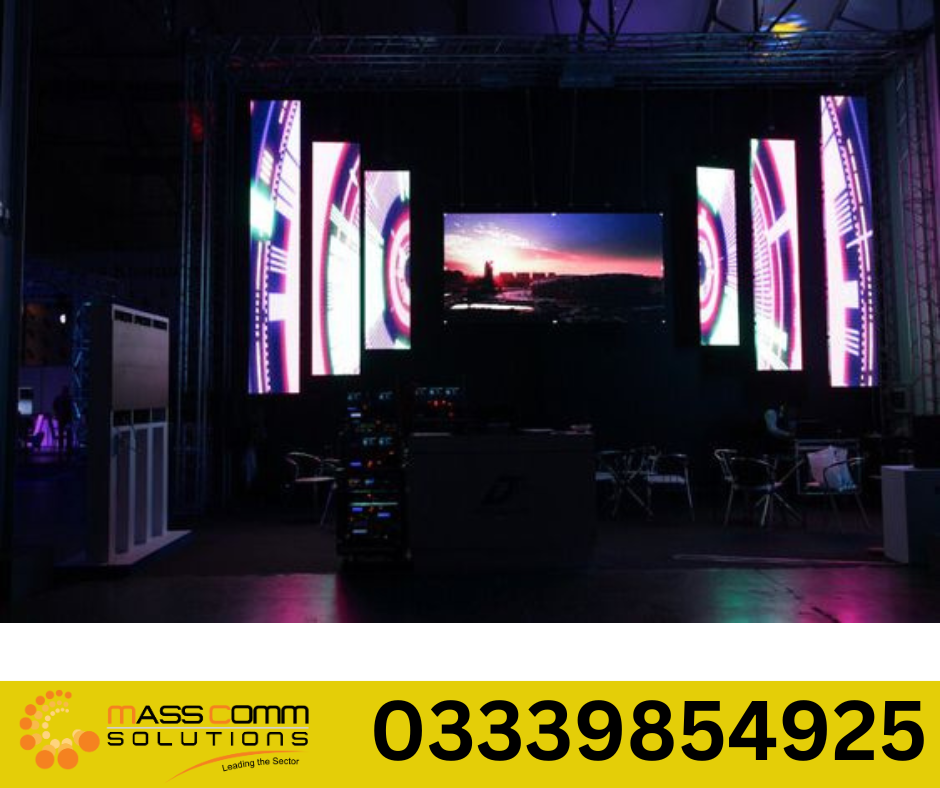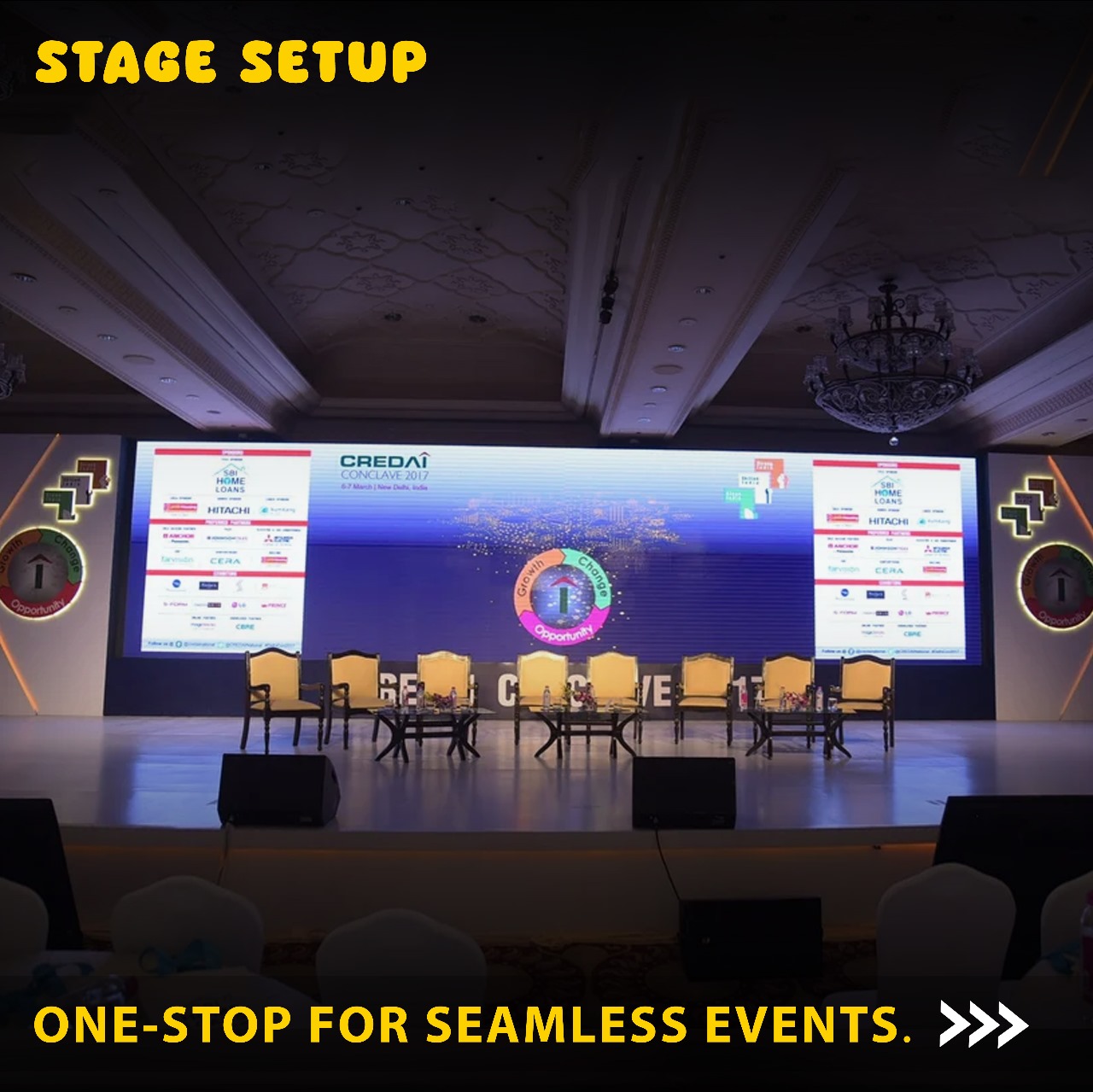When starting or growing an event management business, selecting the right rental SMD screen is essential. An SMD (Surface-Mounted Device) screen is a versatile and powerful display solution, commonly used for events due to its sharp image quality, brightness, and ability to engage large audiences. However, with various types, sizes, and features available, choosing the right screen can be challenging. In this guide, we’ll walk you through key factors to consider when selecting an SMD screen for events, ensuring you make an informed decision that benefits your business.

1. Understand Your Event Needs
The first step in selecting an SMD screen for events is to clearly understand your business needs:
- Types of Events: Consider the events you typically handle. For corporate conferences, smaller, high-definition screens may work, whereas concerts and large gatherings need larger screens with a higher pixel pitch.
- Audience Size: Larger audiences need bigger screens or multiple screens to ensure visibility from a distance.
- Indoor or Outdoor Use: Different screens are designed for indoor and outdoor use. Outdoor SMD screens have higher brightness and weather protection.
2. Choose the Right Size
The size of the SMD screen plays a crucial role in the visual impact of your events. Some common sizes include:
- Small Screens (Under 100 inches): Best for small, intimate settings like conference rooms.
- Medium Screens (100-200 inches): Ideal for mid-sized indoor events like seminars or small exhibitions.
- Large Screens (Over 200 inches): Perfect for outdoor events, concerts, and large gatherings where visibility from a distance is needed.
When choosing a screen size, balance visual impact with practical needs, such as portability and space.
3. Decide on Pixel Pitch
Pixel pitch is the distance between the pixels on the screen, measured in millimeters. It affects the clarity of the display at different viewing distances:
- Small Pixel Pitch (Under 3 mm): Ideal for high-resolution indoor events where the audience is closer to the screen.
- Medium Pixel Pitch (3-6 mm): Suitable for medium-sized events where the audience is a bit farther away.
- Large Pixel Pitch (Over 6 mm): Best for outdoor events or large halls where the audience is at a significant distance from the screen.
Choosing the right pixel pitch ensures that your SMD screen for events provides clear and crisp visuals without blurring or pixelation.
4. Indoor vs. Outdoor SMD Screens
SMD screens for events come in two main types: indoor and outdoor. Each has unique features to suit its environment:
- Indoor SMD Screens: Designed for indoor venues with controlled lighting. These screens typically have a lower brightness level and do not require weather protection. They’re perfect for conferences, exhibitions, and corporate events.
- Outdoor SMD Screens: Built to withstand various weather conditions and provide high brightness, which helps combat sunlight. These screens are ideal for open-air concerts, sports events, and other outdoor activities.
Choosing the right type depends on the types of events you handle and your budget.
5. Consider Portability and Setup Time
For event managers, portability and ease of setup are critical. Look for screens that are lightweight and come with modular designs. A modular screen lets you add or remove sections, allowing you to adjust the size according to the event needs. Portable screens also simplify logistics and reduce labor costs. Quick setup times mean faster preparation, which can be essential when managing multiple events.
6. Look for Brightness and Contrast Ratio
Brightness is measured in nits and is crucial for visibility, especially in outdoor settings. The contrast ratio, on the other hand, determines how sharp and clear images look on the screen.
- Indoor SMD Screens: 500-1,000 nits brightness is often enough.
- Outdoor SMD Screens: Look for screens with at least 2,000 nits to ensure visibility in daylight.
The contrast ratio is also essential, as it enhances the overall viewing experience. A higher contrast ratio means better image depth and color differentiation, which is especially useful for displaying videos and high-quality visuals.
7. Check for Additional Features
When selecting an SMD screen for events, look for additional features that enhance usability:
- Remote Control: Allows you to operate the screen from a distance, which can be handy during events.
- Weather Resistance: Important for outdoor screens to protect against rain, dust, and temperature fluctuations.
- Low Power Consumption: Reduces energy costs and makes screens more eco-friendly.
- Flexible Connectivity: HDMI, USB, and wireless connectivity options make it easy to connect with various devices and control the display during events.
Additional features can make your SMD screen easier to use, adding convenience and functionality.
8. Rental Cost and Budget Considerations
If you’re considering purchasing a screen for long-term rentals, consider the following budget factors:
- Initial Investment: High-quality SMD screens come with a higher upfront cost, but they tend to have a longer lifespan and better performance.
- Maintenance Costs: Outdoor screens might require more maintenance due to exposure to weather, so account for maintenance in your budget.
- Rental Pricing: Research local rental rates to determine a competitive rate for your clients. Renting out your SMD screen for events can bring in additional income and cover the initial investment faster.
9. Choose a Reliable Supplier
Finding a reliable supplier for your SMD screen for events is as important as choosing the right screen. Look for suppliers with:
- Good Reputation: Check online reviews and testimonials from other event managers to ensure reliability.
- Warranty and Support: A supplier that offers warranty and ongoing support can be invaluable, especially if you encounter technical issues.
- Variety of Options: A supplier with a wide range of SMD screens can help you find the perfect fit for your event needs.
Building a good relationship with your supplier can also lead to future discounts and special deals.
10. Evaluate Customer Reviews and Case Studies
Customer reviews and case studies offer insights into how well an SMD screen for events performs in real-life settings. Look for reviews that mention:
- Reliability: The screen should perform consistently without frequent issues.
- Visual Quality: High ratings for brightness, contrast, and color accuracy.
- Ease of Setup: Positive feedback on ease of setup can be beneficial if you plan to move the screen frequently.
Case studies from other event management businesses can also give you a clearer picture of the screen’s potential.
Conclusion
Choosing the right SMD screen for events is a critical decision that can affect your business’s success. By considering factors like screen size, pixel pitch, brightness, portability, and cost, you’ll be well-prepared to select a screen that aligns with your event needs and budget. Remember, investing in high-quality, versatile SMD screens can help your business deliver impressive visual experiences, attracting more clients and setting you apart in the event management industry. Whether for corporate events, concerts, or outdoor gatherings, the right SMD screen can elevate your events and leave a lasting impression on your clients.

